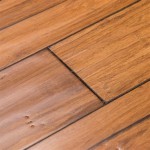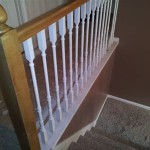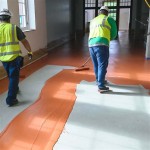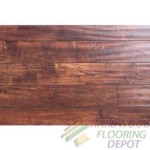Vinyl Flooring and Installation: A Comprehensive Guide
Vinyl flooring has emerged as a popular choice for homeowners and businesses alike, offering a wide range of benefits and unparalleled versatility. Whether you're looking to update your home decor or create a durable and stylish space in your commercial property, vinyl flooring offers an array of options to suit your needs.
Types of Vinyl Flooring
Vinyl flooring comes in various formats, each with its own unique characteristics and advantages:
- Luxury Vinyl Plank (LVP): LVP mimics the appearance of hardwood planks with realistic textures and patterns, providing a stylish and durable alternative to traditional wood flooring.
- Luxury Vinyl Tile (LVT): LVT is designed to resemble natural stone or ceramic tiles, offering the look of high-end flooring without the hefty price tag and maintenance requirements.
- Vinyl Sheet: Vinyl sheet flooring comes in continuous rolls, providing a seamless and waterproof surface, making it ideal for moisture-prone areas.
- Vinyl Composite Tile (VCT): VCT is a cost-effective and durable option often used in commercial settings due to its resistance to wear and tear.
Benefits of Vinyl Flooring
Vinyl flooring offers numerous benefits that make it an excellent choice for various flooring applications:
- Durability: Vinyl flooring is highly resistant to scratches, dents, and wear, making it suitable for high-traffic areas.
- Waterproof: Most vinyl flooring options are water-resistant or waterproof, making them ideal for kitchens, bathrooms, and other moisture-prone areas.
- Low Maintenance: Vinyl flooring is easy to clean and maintain, requiring only regular sweeping, vacuuming, and occasional mopping.
- Affordability: Vinyl flooring is a cost-effective option compared to other flooring materials such as hardwood or ceramic tiles.
- Versatility: Vinyl flooring is available in a wide range of styles, colors, and textures, making it suitable for various decor styles and applications.
Installation Considerations
Proper installation is essential to ensure the longevity and performance of your vinyl flooring. Following a few guidelines can help ensure a successful installation:
- Substrate Preparation: The subfloor should be smooth, level, and free of any imperfections before installing vinyl flooring.
- Moisture Barrier: A moisture barrier should be installed beneath the vinyl flooring to prevent moisture from seeping through and damaging the flooring.
- Floating Installation: LVP and LVT can be installed using a floating installation method, which does not require adhesives or nails.
- Adhesive Installation: Vinyl sheet and VCT require adhesive to be installed securely.
- Professional Installation: For complex installations or large projects, consider hiring a professional installer to ensure proper execution.
Conclusion
Vinyl flooring offers a winning combination of durability, versatility, and affordability, making it an excellent choice for both residential and commercial applications. With careful consideration of the types of vinyl flooring available, its benefits, and proper installation techniques, you can enhance the aesthetics and functionality of your space for years to come.

Vinyl Flooring Installation From Lowe S

Average Cost Of Vinyl Flooring Installation In 2024 Forbes Home

Vinyl Tile Installation A Comprehensive Guide Gc Flooring Pros

How To Install Vinyl Plank Flooring In A Bathroom Fixthisbuildthat

A Beginner S Guide To Installing Vinyl Plank Flooring Dumpsters Com

Installing Vinyl Floors A Do It Yourself Guide The Honeycomb Home

Installing Vinyl Plank Flooring How To Fixthisbuildthat

Installing Vinyl Floors A Do It Yourself Guide The Honeycomb Home
How To Lay Vinyl Flooring Sheets Tiles And Planks Tarkett

Laying Vinyl Planks The Right Way Expert Guide By Fantastic Handyman
Related Posts








